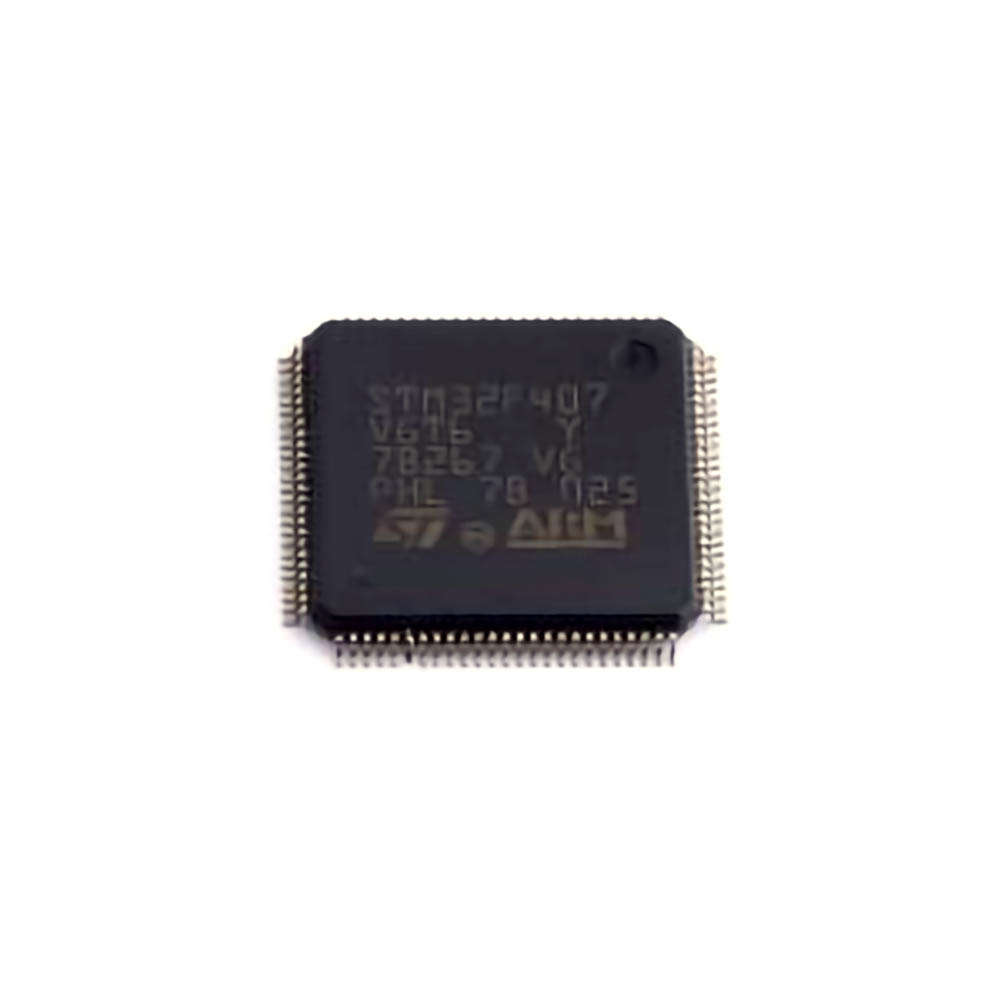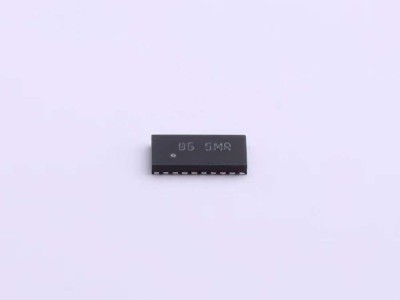
The STM32F407VGT6 microcontroller from STMicroelectronics is a Power ful ARM Cortex-M4 based chip widely used in embedded systems. Thanks to its performance, peripherals, and flexibility, it is a popular choice for a wide range of applications, including motor control, consumer electronics, industrial automation, and IoT devices. However, as with any complex device, users often encounter certain common issues during development and deployment. Whether you're a beginner or an experienced embedded systems developer, understanding common troubleshooting techniques for the STM32F407VGT6 can save time, effort, and frustration.
1. Power Issues
Symptoms:
The microcontroller doesn’t power on.
The microcontroller resets or shuts down intermittently.
Causes:
Incorrect Power Supply Voltage: The STM32F407VGT6 operates at 3.3V, and if it is exposed to voltages above this limit, it can lead to malfunction or damage. Likewise, an insufficient power supply could lead to erratic behavior or failure to start.
Improper Power Rail Decoupling: The microcontroller needs stable power for reliable operation. If the power supply is noisy or unstable, the microcontroller might reset unexpectedly.
Solutions:
Check the Voltage: Ensure that the power supply is correctly providing 3.3V and that the tolerance is within acceptable limits (typically ±5%). Use a multimeter to measure the voltage on the VCC pin of the MCU.
Decouple the Power Supply: Use appropriate bypass capacitor s (0.1µF and 10µF) near the power supply pins of the microcontroller to smooth out voltage fluctuations. These capacitors help in filtering noise from the power rails.
2. Bootloader and Flash Issues
Symptoms:
The microcontroller fails to boot or run the application.
The device resets or enters a bootloader mode unexpectedly.
Causes:
Corrupted Flash Memory : If the flash memory where the firmware is stored gets corrupted, the microcontroller will not be able to execute the application as expected.
Bootloader Mode: The STM32F407VGT6 has a built-in bootloader that allows it to load firmware from a specific location (e.g., UART, USB, etc.). If the bootloader mode is incorrectly triggered, the device will not run the application from the flash.
Solutions:
Reprogram the Flash: If you suspect flash corruption, try reprogramming the firmware through a programmer like ST-Link or J-Link. Use STMicroelectronics' STM32CubeProgrammer to reload the correct firmware onto the microcontroller.
Check Boot Pins: The STM32F407VGT6 has specific pins (BOOT0 and BOOT1) that determine the boot mode. Make sure the BOOT0 pin is pulled low to ensure the microcontroller boots from the flash memory.
3. Communication Errors (UART, SPI, I2C)
Symptoms:
Communication with peripherals (e.g., sensors, external devices) fails.
The MCU cannot send or receive data over UART, SPI, or I2C.
Causes:
Incorrect Pin Configuration: The STM32F407VGT6 has several peripherals that share pins. It’s crucial to ensure the pins for UART, SPI, or I2C are correctly configured in the software and matched to the hardware.
Mismatched Baud Rate or Protocol Settings: For UART communication, incorrect baud rates or mismatched settings between devices can cause data loss or corrupted data. Similarly, for SPI and I2C, incorrect Clock settings can lead to communication failure.
External Hardware Issues: Faulty cables, incorrect wiring, or damaged peripherals can prevent successful communication.
Solutions:
Check Pin Mappings: Verify the pinout in the STM32CubeMX tool, which can automatically generate configuration files. Ensure the correct pins are set for the desired UART, SPI, or I2C interface s.
Verify Protocol Settings: Double-check the baud rate, parity, stop bits, and data bits for UART. For SPI and I2C, ensure the clock polarity, phase, and data order are correctly configured.
Test with Known Good Devices: If possible, replace the external peripherals with known working ones to eliminate hardware issues.
4. Clock Configuration Issues
Symptoms:
The microcontroller behaves erratically.
Timers or communication peripherals do not work as expected.
Causes:
Incorrect Clock Source: The STM32F407VGT6 can be clocked from various sources such as the internal 16 MHz RC oscillator, an external crystal, or an external clock source. If the clock configuration is incorrect, peripherals that rely on specific clock sources may malfunction.
PLL Misconfiguration: The Phase-Locked Loop (PLL) is often used to achieve higher clock frequencies. Misconfiguration of the PLL can result in incorrect system or peripheral clock frequencies, leading to unstable operation.
Solutions:
Use STM32CubeMX: The easiest way to configure clocks is through STM32CubeMX, which allows you to select your clock sources, adjust PLL settings, and generate code for your project. Make sure the system clock is set to the desired frequency.
Check External Crystal Connections: If you are using an external crystal, ensure it is connected properly and that the correct load capacitors are in place. A poorly connected or low-quality crystal can lead to unstable clock signals.
5. GPIO and Peripheral Initialization
Symptoms:
The GPIO pins or peripherals (e.g., ADC, PWM) are not behaving as expected.
Inputs or outputs don’t show the correct voltage levels.
Causes:
Incorrect GPIO Initialization: Misconfigured GPIOs can cause peripherals to behave erratically or lead to incorrect outputs.
Peripheral Not Enabled: The STM32F407VGT6 has several peripherals that need to be enabled in the system’s clock configuration. If a peripheral is not properly clocked, it won’t work.
Solutions:
Configure GPIOs Correctly: Use STM32CubeMX to configure GPIOs with the correct mode (input, output, analog, etc.) and the proper pull-up or pull-down settings.
Enable Peripherals: Check that the clock for the peripheral is enabled in the RCC (Reset and Clock Control) register. You can do this via STM32CubeMX or by manually configuring the registers.
6. Watchdog Timer (IWDG and WWDG) Issues
Symptoms:
The microcontroller resets continuously.
The system resets unexpectedly, even when the firmware is running without errors.
Causes:
Watchdog Timer Timeout: The Independent Watchdog (IWDG) and Window Watchdog (WWDG) are safety mechanisms that reset the microcontroller if the firmware fails to operate correctly within a specific time window. If the firmware doesn’t refresh the watchdog in time, the system will reset.
Solutions:
Properly Refresh the Watchdog: Ensure that the watchdog timer is being reset (kicked) at appropriate places in the main loop or during task execution. If you're using the WWDG, make sure the correct window time is respected.
Disable Watchdog Temporarily for Debugging: If you need to debug an issue without the microcontroller resetting, temporarily disable the watchdog timer. However, ensure it's re-enabled before production to avoid unexpected resets.
7. Memory and Stack Overflow Issues
Symptoms:
The application behaves unpredictably.
Crashes or resets occur in certain parts of the code.
Causes:
Stack Overflow: If the microcontroller runs out of stack space (due to deep recursion or large local variables), it can cause memory corruption, leading to unpredictable behavior.
Heap Corruption: Improper memory management (e.g., failing to free dynamically allocated memory) can cause heap corruption, resulting in crashes or undefined behavior.
Solutions:
Increase Stack Size: Use STM32CubeMX or modify the linker script to allocate more memory to the stack if you suspect a stack overflow.
Check Memory Usage: Monitor memory usage using debugging tools like STM32CubeIDE or external debugging probes. Consider using static analysis tools to ensure efficient memory management.
8. Debugging with STM32CubeIDE
For a smooth development process, debugging is an essential skill. STM32CubeIDE provides a comprehensive debugging environment that allows developers to step through their code, inspect variables, and set breakpoints. It also allows for advanced features like memory dumps, register inspection, and real-time variable tracking. Debugging is crucial for identifying the root cause of most issues, especially for complex embedded systems applications.
Final Thoughts
The STM32F407VGT6 is a versatile and powerful microcontroller, but like all embedded systems, it can present challenges during development. From power issues to peripheral misconfigurations, understanding common problems and knowing how to troubleshoot them can help developers avoid long delays and production setbacks. By using tools like STM32CubeMX, STM32CubeIDE, and following best practices for hardware design, software configuration, and debugging, you can resolve most issues effectively.
If you are looking for more information on commonly used Electronic Components Models or about Electronic Components Product Catalog datasheets, compile all purchasing and CAD information into one place.


